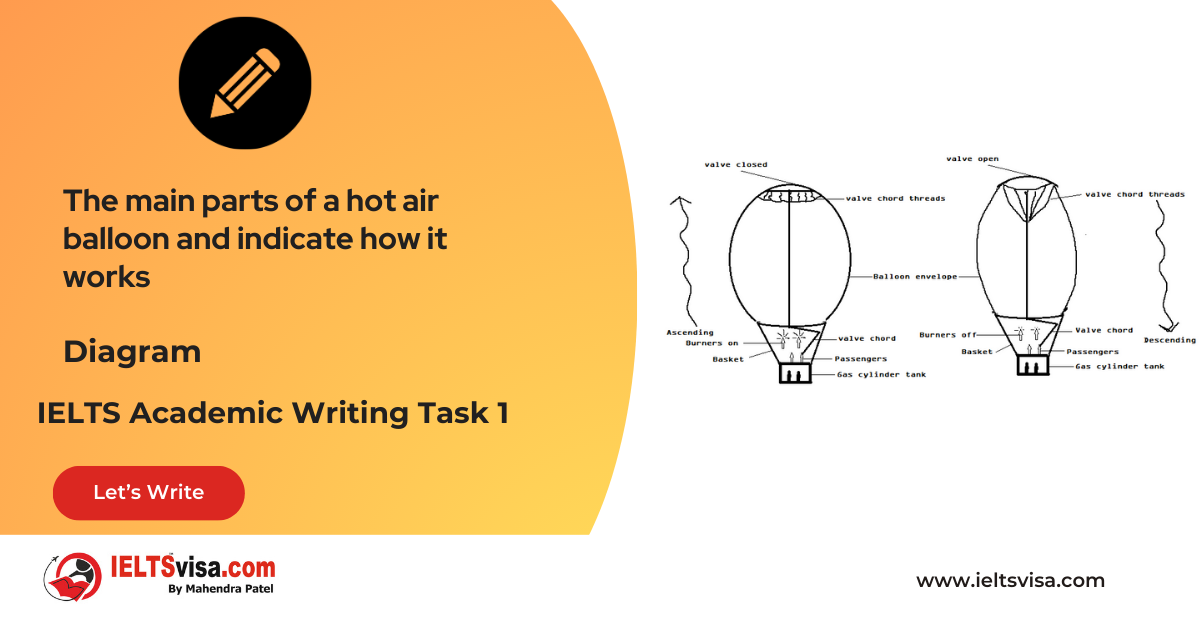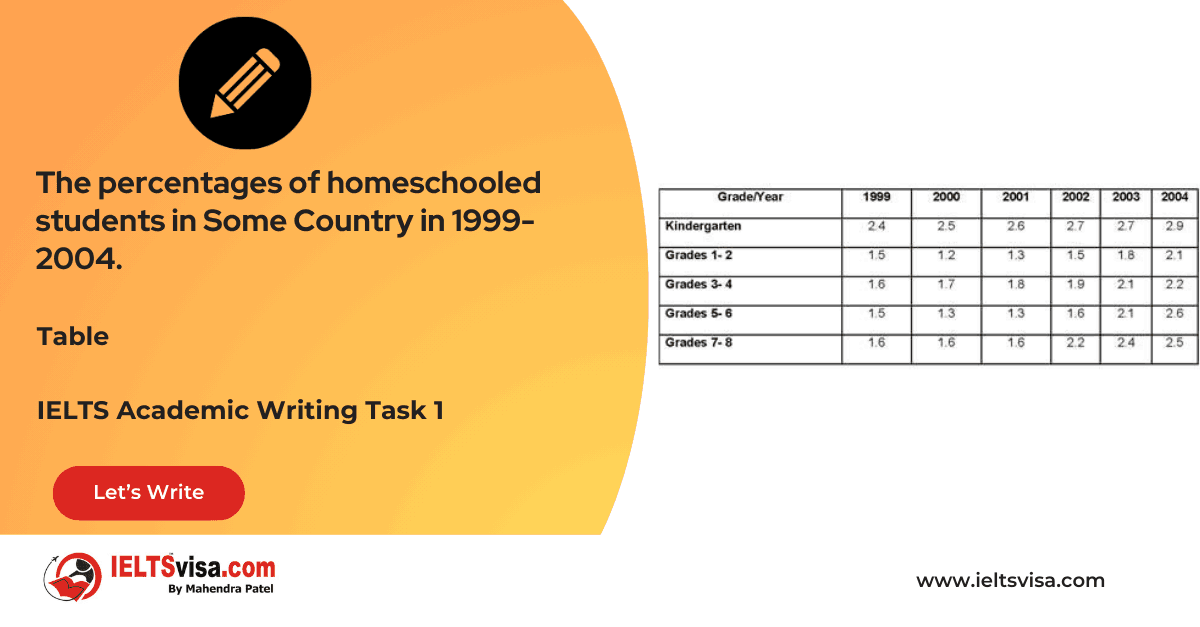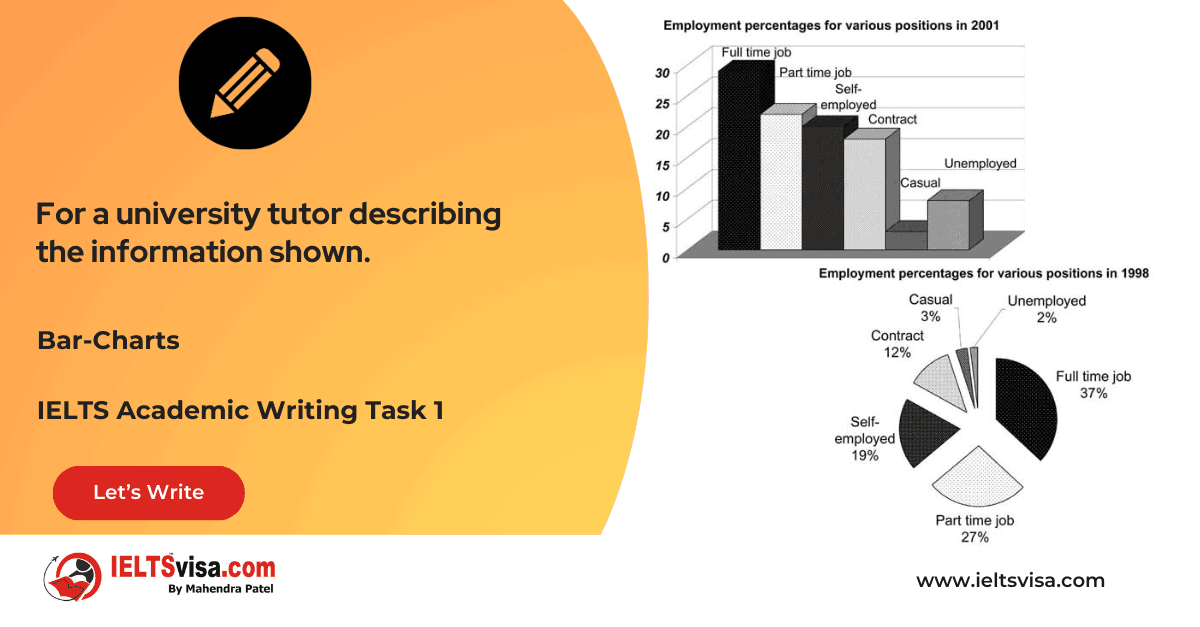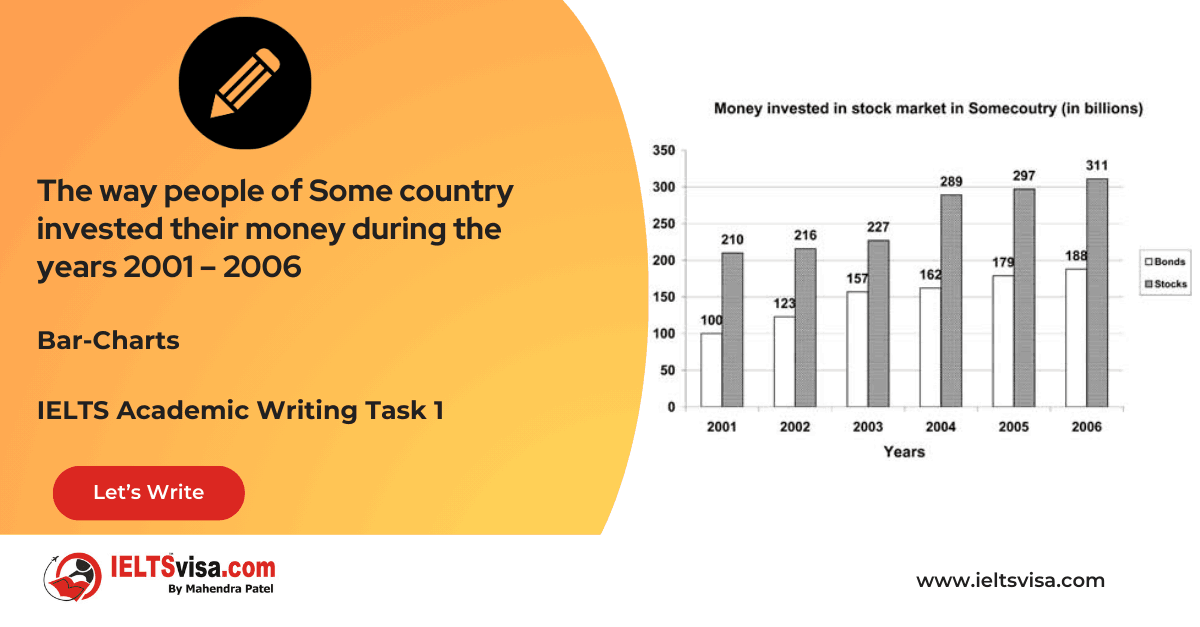Percentage of Cinema Visitors by Age Group from 1978 to 2008
IELTS Academic Writing Task 1 - Line Graph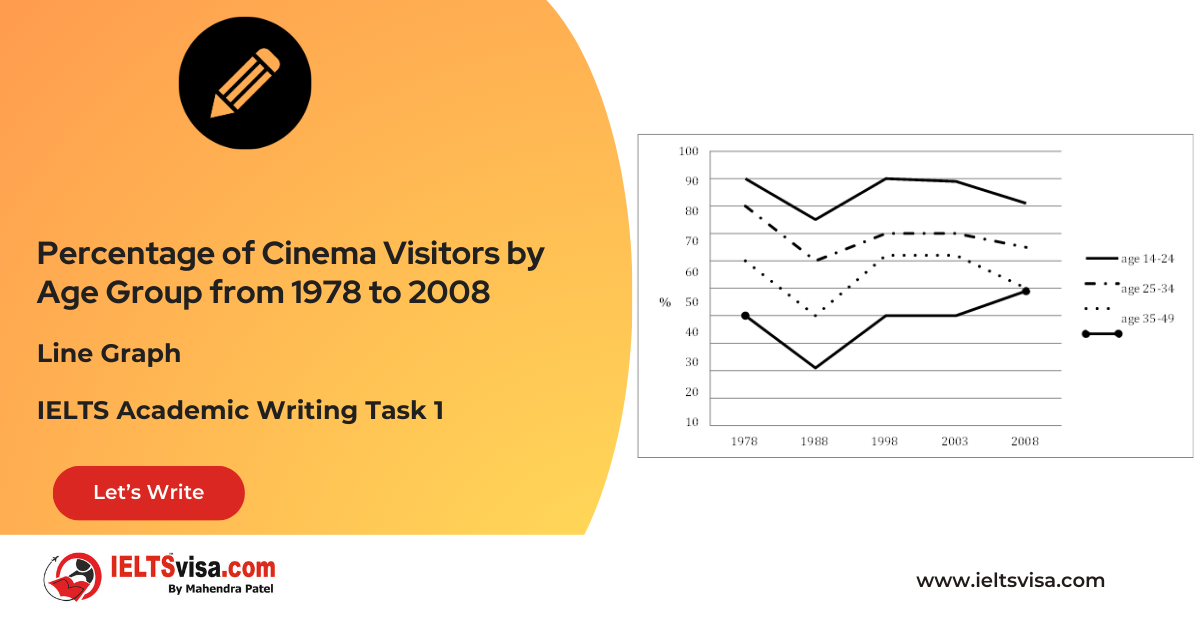
IELTS Writing Task 1 Question
The line graph shows the percentage of different age groups of cinema visitors in a particular country from 1978 to 2008.
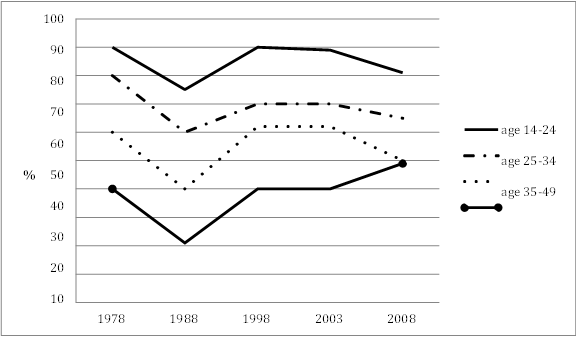
Common questions for the line graph
1. Graph Type: Line Graph
2. Title: Percentage of Cinema Visitors by Age Group from 1978 to 2008
3. What are the units of measurement?: Percentage of cinema visitors
4. Who: Four age groups (14-24, 25-34, 35-49, 50+)
5. When: From 1978 to 2008
6. Where: A particular country
7. Topic: Cinema attendance trends among different age groups
Process Showing and Trends
Comparison 1: Cinema Attendance (1978–1988)
- Details:
1. In 1978, cinema attendance was highest among the 14-24 age group at 90%, followed by the 25-34 age group at 80%, the 35-49 group at 60%, and the 50+ group at 40%.
2. By 1988, the attendance dropped across all age groups: the 14-24 group fell to 75%, the 25-34 group to 60%, the 35-49 group to 40%, and the 50+ group to 20%.
Comparison 2 : Growth in Cinema Attendance (1988–1998)
- Details:
1. From 1988 to 1998, there was a noticeable increase in cinema attendance across all age groups.
2. This growth was most significant in the 14-24 and 25-34 age groups.
Comparison 3 : Growth in Cinema Attendance (1988–1998)
- Details:
1. After 1998, cinema attendance stabilized for all age groups until 2003.
2. From 2003 to 2008, cinema attendance decreased in all groups except for the 50+ group, which saw an increase.
Sample Answer
The line graph illustrates the cinema attendance trends among four different age groups in a particular country from 1978 to 2008.
In 1978, the 14-24 age group had the highest cinema attendance at 90%, followed by the 25-34 group at 80%, the 35-49 group at 60%, and the 50+ group at 40%. Over the next decade, cinema attendance decreased across all groups, with the 14-24 group falling to 75%, the 25-34 group to 60%, the 35-49 group to 40%, and the 50+ group dropping to 20% by 1988.
From 1988 to 1998, cinema attendance increased across all age groups, with the 14-24 and 25-34 age groups showing the most significant rise. After 1998, cinema attendance remained stable in all groups until 2003. From 2003 to 2008, cinema attendance declined in all groups except for the 50+ group, which showed an upward trend.
Overall, cinema attendance was more popular among younger age groups, but after 2003, the over-50s became the only group to show increased cinema attendance, while the others declined.
Top 26 Vocabularies
| Vocabulary | Meaning | Synonyms | Examples | Type |
| Proportion | The percentage or share of something | Percentage, ratio | “The proportion of cinema attenders in the 14-24 group was the highest in 1978.” | Noun |
| Decrease | A reduction or decline in the amount | Decline, drop | “Cinema attendance decreased across all age groups after 1988.” | Verb/ Noun |
| Stabilize | To become steady or unchanging | Steady, remain constant | “After 1998, cinema attendance stabilized for all age groups.” | Verb/ Noun |
| Escalation | A significant increase | Rise, growth | “There was a noticeable escalation in cinema attendance from 1988 to 1998.” | Noun |
| Trend | A general direction or tendency | Pattern, movement | “The trend shows that cinema attendance declined in most age groups after 2003.” | Noun |
| Illustrate | To explain or clarify something with examples | Depict, demonstrate | “The line graph illustrates cinema attendance trends.” | Verb |
| Fluctuate | To change continuously in an irregular way | Vary, oscillate | “Cinema attendance fluctuated across all age groups.” | Verb |
| Steady | Constant, not changing | Stable, consistent | “Attendance remained steady between 1998 and 2003.” | Adjective |
| Decline | A gradual reduction | Decrease, drop | “Cinema attendance declined after 2003.” | Noun/Verb |
| Rise | An increase in level or amount | Growth, surge | “There was a rise in cinema attendance from 1988 to 1998.” | Noun/Verb |
| Dominant | More influential or prevalent | Leading, prevailing | “The 14-24 age group remained the dominant group in 1978.” | Adjective |
| Pattern | A repeated trend or regularity | Trend, sequence | “The attendance pattern showed a decline after 2003.” | Noun |
| Notable | Worthy of attention | Significant, remarkable | “There was a notable increase in cinema attendance in the late 1990s.” | Adjective |
| Dip | A temporary decrease | Drop, decline | “Cinema attendance saw a dip in 1988 before rising again.” | Noun |
| Surge | A sudden and strong increase | Jump, escalation | “There was a surge in attendance for the younger age groups.” | Noun/Verb |
| Prevail | To dominate or be widespread | Reign, predominate | “Younger age groups continued to prevail in cinema attendance.” | Verb |
| Vary | To show differences over time | Change, fluctuate | “Attendance rates varied among different age groups.” | Verb |
| Outpace | To grow or develop faster than something else | Surpass, exceed | “The 50+ group began to outpace younger groups after 2003.” | Verb |
| Peak | To reach the highest point | Climax, top | “Cinema attendance peaked in 1978 for the 14-24 group.” | Verb/Noun |
| Gradual | Happening slowly over time | Slow, progressive | “There was a gradual decline in attendance after 2003.” | Adjective |
| Upswing | An improvement or increase | Boost, rise | “An upswing in cinema attendance occurred between 1988 and 1998.” | Noun |
| Dwindle | To reduce slowly in size or amount | Shrink, lessen | “The 25-34 age group’s attendance dwindled after 2003.” | Verb |
| Persist | To continue despite difficulty | Endure, remain | “The 50+ group’s increase in attendance persisted after 2003.” | Verb |
| Substantial | Large or considerable in amount | Significant, major | “A substantial number of young people attended cinemas in 1978.” | Adjective |
| Rebound | To recover after a decline | Recover, bounce back | “Cinema attendance rebounded from 1988 to 1998.” | Verb |
| Contrary | Opposite in nature or direction | Opposing, different | “Contrary to other groups, the 50+ group saw increased attendance after 2003.” | Adjective |

Our Books
Master IELTS Speaking Part 1
IELTS Writing Task 1 Book
IELTS Writing Task 2 Book
Practice IELTS Other Modules
IELTS Listening
The IELTS Listening test assesses how well you can understand spoken English in various contexts. It lasts about 30 minutes and is divided into four sections with a total of 40 questions. The listening tasks become increasingly difficult as the test progresses.
IELTS Academic Reading
The IELTS Academic Reading section assesses your ability to understand and interpret a variety of texts in academic settings. It is designed to evaluate a range of reading skills, including skimming for gist, reading for main ideas, reading for detail, understanding inferences, and recognizing a writer's opinions and arguments.
IELTS Speaking
The IELTS Speaking test assesses your ability to communicate in English on everyday topics. It lasts 11-14 minutes and consists of three parts: introduction, cue card, and a discussion based on the cue card topic.
IELTS General Reading
IELTS General Reading tests your ability to understand and interpret various types of texts. Here are some key areas and types of content you can expect to encounter in the reading section, along with tips for effective preparation.
IELTS Academic Writing Task 1
In IELTS Academic Writing Task 1, you are presented with a visual representation of information, such as graphs, charts, tables, or diagrams, and you are required to summarize, compare, or explain the data in your own words.
IELTS General Writing Task 1
In IELTS General Writing Task 1, you are required to write a letter based on a given situation. The letter can be formal, semi-formal, or informal, depending on the prompt. Here’s a breakdown of the key components to include in your letter
IELTS Academic Writing Task 2
In IELTS Academic Writing Task 2, you are required to write an essay in response to a question or topic. Here’s a guide to help you understand the essential elements of this task
IELTS Exam Tips
To succeed in the IELTS exam, practice regularly, familiarize yourself with the test format, improve your vocabulary, develop time management skills, and take mock tests to build confidence.
Grammer for IELTS
Grammar is the foundation of effective communication in English. Understanding tense usage, subject-verb agreement, and sentence structure enhances clarity and coherence in writing and speaking.
Vocabulary for IELTS
Vocabulary plays a crucial role in the IELTS (International English Language Testing System) exam, especially in the Speaking and Writing sections. Here’s an overview of why vocabulary is important and how it impacts your performance
RECENT IELTS SAMPLES QUESTIONS AND ANSWERS
Task 1 – Diagram – A conference hall built in 1981 and planned for 2020
20:00 Start Pause Stop [df_adh_heading title_infix="IELTS Writing Task 1 Question" use_divider="on"...
Task 1 – Table – The percentages of homeschooled students in Some Country in 1999-2004.
20:00 Start Pause Stop [df_adh_heading title_infix="IELTS Writing Task 1 Question" use_divider="on"...
Task 1 – Table – For a university tutor describing the information shown.
20:00 Start Pause Stop [df_adh_heading title_infix="IELTS Writing Task 1 Question" use_divider="on"...
Task 1 – Bar-Charts – The way people of Some country invested their money during the years 2001 – 2006
20:00 Start Pause Stop [df_adh_heading title_infix="IELTS Writing Task 1 Question" use_divider="on"...
Task 1 – Diagram – Rainwater Harvesting and Conversion to Drinking Water in an Australian Town.
20:00 Start Pause Stop [df_adh_heading title_infix="IELTS Writing Task 1 Question" use_divider="on"...
Task 1 – Column graph – Percentage of Young People Enrolled in Universities in 2000 and 2007.
20:00 Start Pause Stop [df_adh_heading title_infix="IELTS Writing Task 1 Question" use_divider="on"...

